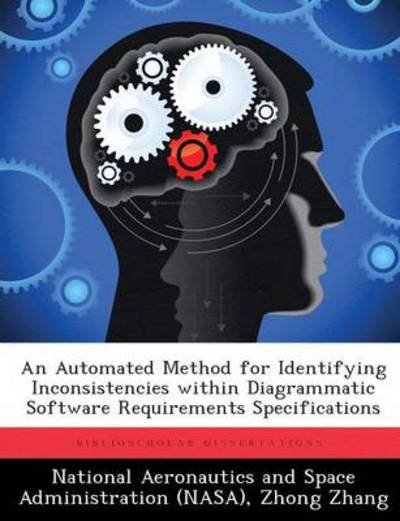
Vertel uw vrienden over dit artikel:
An Automated Method for Identifying Inconsistencies Within Diagrammatic Software Requirements Specifications
Zhong Zhang
An Automated Method for Identifying Inconsistencies Within Diagrammatic Software Requirements Specifications
Zhong Zhang
Publisher Marketing: The development of large-scale, composite software in a geographically distributed environment is an evolutionary process. Often, in such evolving systems, striving for consistency is complicated by many factors, because development participants have various locations, skills, responsibilities, roles, opinions, languages, terminology and different degrees of abstraction they employ. This naturally leads to many partial specifications or viewpoints. These multiple views on the system being developed usually overlap. From another aspect, these multiple views give rise to the potential for inconsistency. Existing CASE tools do not efficiently manage inconsistencies in distributed development environment for a large-scale project. Based on the ViewPoints framework the WHERE (Web-Based Hypertext Environment for requirements Evolution) toolkit aims to tackle inconsistency management issues within geographically distributed software development projects. Consequently, WHERE project helps make more robust software and support software assurance process. The long term goal of WHERE tools aims to the inconsistency analysis and management in requirements specifications. A framework based on Graph Grammar theory and TCMJAVA toolkit is proposed to detect inconsistencies among viewpoints. This systematic approach uses three basic operations (UNION, DIFFERENCE, INTERSECTION) to study the static behaviors of graphic and tabular notations. From these operations, subgraphs Query, Selection, Merge, Replacement operations can be derived. This approach uses graph PRODUCTIONS (rewriting rules) to study the dynamic transformations of graphs. We discuss the feasibility of implementation these operations. Also, We present the process of porting original TCM (Toolkit for Conceptual Modeling) project from C++ to Java programming language in this thesis. Contributor Bio: Zhang, Zhong Yoshiaki Shimizu is a professor in the Production Systems Engineering department at Toyohashi University of Technology, Japan. Professor Shimizu received his BSc, MEng and PhD in chemical engineering from Kyoto University. After graduate school, Prof. Shimizu was employed by Kyoto University where he carried out research on nuclear waste management and reactor safety. His current research interests include life cycle engineering, network design approaches for distribution systems, multi-objective optimization, meta-heuristic algorithms, and supply chain management. He is a member of the Society of Chemical Engineers of Japan, the Society of Mechanical Engineers of Japan, the Society of Instrument and control Engineers of Japan, the Institute of Systems of Japan, the Control and Information Engineers Society of Japan and the Operation Research Society of Japan. Zhong Zhang is a professor of the Production Systems Engineering department at Toyohashi University of Technology, Japan. He received his Bachelor engineering and Master engineering degrees in 1982 and 1984 respectively, from Xi'an Highway University, China, and his Doctor engineering degree in 1993 from Okayama University, Japan. He is a member of the Japan Mechanical Engineers; the Society of Instrument and control Engineers, Japan; Society of Automotive Engineers of Japan; Research Institute of Signal Processing, Japan; Institute of Electrical Engineers of Japan; IEEE. Rafael Batres is an associate professor of industrial systems engineering at Toyohashi University of Technology, Japan. His research interests include engineering safety, process synthesis, multi-agent systems, and ontologies. Rafael holds MS andPhD degrees in process systems engineering from the Tokyo Institute of Technology. He is a member of the Society of Chemical Engineers of Japan, the Artificial Intelligence Society of Japan, the American Institute of Chemical Engineers, and the American Society for Engineering Education.
| Media | Boeken Paperback Book (Boek met zachte kaft en gelijmde rug) |
| Vrijgegeven | 12 maart 2013 |
| ISBN13 | 9781288911240 |
| Uitgevers | Biblioscholar |
| Pagina's | 102 |
| Afmetingen | 189 × 246 × 5 mm · 195 g |
Bekijk alles van Zhong Zhang ( bijv. Paperback Book )


